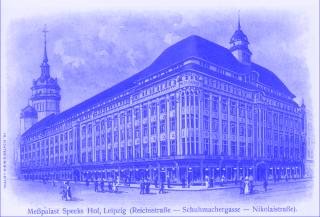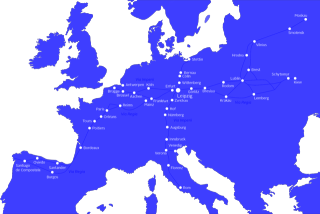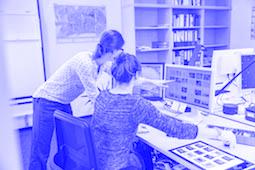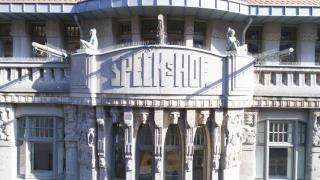
History of the GWZO
Researching Eastern Europe as a dynamic historical region
– this guiding idea has been shaping the GWZO’s goals, working habits and recipe for success for a quarter of a century.
Founded 30 October 1995, today’s Leibniz Institute GWZO sprang from recommendations of the Academic Advisory Council. When, in 1991, the GDR’s Academy of Sciences was in the process of dissolution, parts of the humanities and cultural studies were to be carried forward in »research centres of the humanities«. Under the aegis of the Max Planck Society, the »Society for the Promotion of New Academic Endeavours Ltd« was founded, including – at the urging of the Eastern-Europe historian Klaus Zernack – the establishment of a »Research Area for the Culture and History of East-Central Europe«. This division’s excellent work induced the Academic Council to include the »Research Area Culture and History of East-Central Europe« in its »Recommendations for the Promotion of Centres of the Humanities« of November 1994, advising that it be included in funding by the German Research Foundation (DFG). With the federal state of Saxony providing its essential financing, the GWZO could begin its work in Leipzig in early 1996. The historian Winfried Eberhard was appointed the founding director. The Centre has since cooperated closely with the University of Leipzig, with which it has been officially linked since 2003.
The GWZO as a Leibniz Institute
The GWZO has been a member of the Leibniz Association since 2017. Since then, it has been named the »Leibniz Institute for the History and Culture of Eastern Europe (GWZO)«. The abbreviation GWZO was retained as an established trademark. With its acceptance into the Leibniz Association, the institute re-oriented itself both organisationally and substantially. The GWZO has since administratively divided into the programme area »Research on Eastern Europe«, which comprises the three scientific departments »Humans and Environment«, »Culture and Imagination« and »Entanglements and Globalisation«, the programme area »Transfer of Research Results« and an administrative department. The GWZO was incorporated into the Leibniz Association under Christian Lübke (Director 2007-2021) and Stefan Troebst (Deputy Director 1999-2021). The Institute is currently headed by Maren Röger (Director since 11/2021) and Julia Herzberg (Deputy Director since 10/2023).
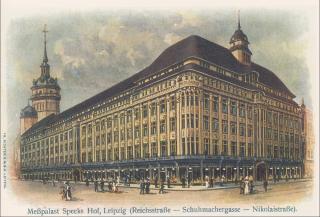
The Residence – A Trade-Fair Palace: Specks Hof in the Heart of the City
The GWZO is located in a particularly historically significant location in Leipzig: the Messepalast or Trade-Fair Palace of Specks Hof. The city’s oldest, still surviving shop-front passage – its history stretching back to the 15th century – lies right in the city centre. The name of the Institute’s address, the Reichsstraße, is a reminder that Leipzig was the intersection between the old trade route Via Imperii, running from north to south, and the Via Regia, connecting Novgorod and Moscow in northeastern Europe with Santiago de Compostela in the southwest. At the start of the 20th century, Specks Hof was the largest trade house in the city. Merchants from across the world offered their wares here, many of them business people from Eastern Europe. Specks Hof was, even then, a place of diversity, internationalism and cosmopolitanism – values for which our Institute also stands.
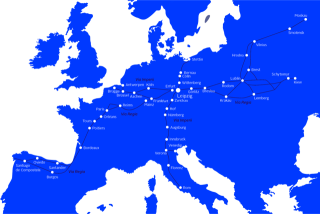
The GWZO in the Academic Centre Leipzig
Leipzig, with its long academic tradition, is an excellent site for researches into Eastern Europe. Medieval trade routes connecting the East with the West, the North with the South were not the only things that crossed paths here: Leipzig was traditionally a trade centre for goods and knowledge. The first scholars of the university, founded 1409, came from the Universitas Pragensis, today’s Charles University. The long academic relationships with Poland are testified to by the Fürstlich Jablonowskische Gesellschaft der Wissenschaften zu Leipzig, that is the Royal Jablovanian Society of Sciences in Leipzig – today’s Societas Jabloviana – and Slavic studies have been taught in Leipzig since 1870.
The Leibniz GWZO Today
The GWZO’s research endeavors currently comprise around 50 employees: domestic and international experts in history, archaeology, cultural history, art history, linguistics and literature studies and further disciplines, specialists for large art exhibitions, the editing of handbooks and management of research data, and those skilled in public relations, librarianship and administration.
Multiplying Knowledge of Eastern Europe Together
In good company with other non-university institutions like the Frauenhofer Centre for International Management and Knowledge Economics (IMW) (known as the Frauenhofer Centre for Middle and Eastern Europe until 2015), the Leibniz Institute for Regional Geography, the Polish Institute Leipzig and the Leibniz Institut for Jewish History and Culture – Simon Dubnow, the GWZO’s uses its diverse research, publically resonant events and (in most recent years) its exhibitions in Germany, Europe and overseas to contribute to the knowledge about the history and culture of our eastern and southern neighbours.

